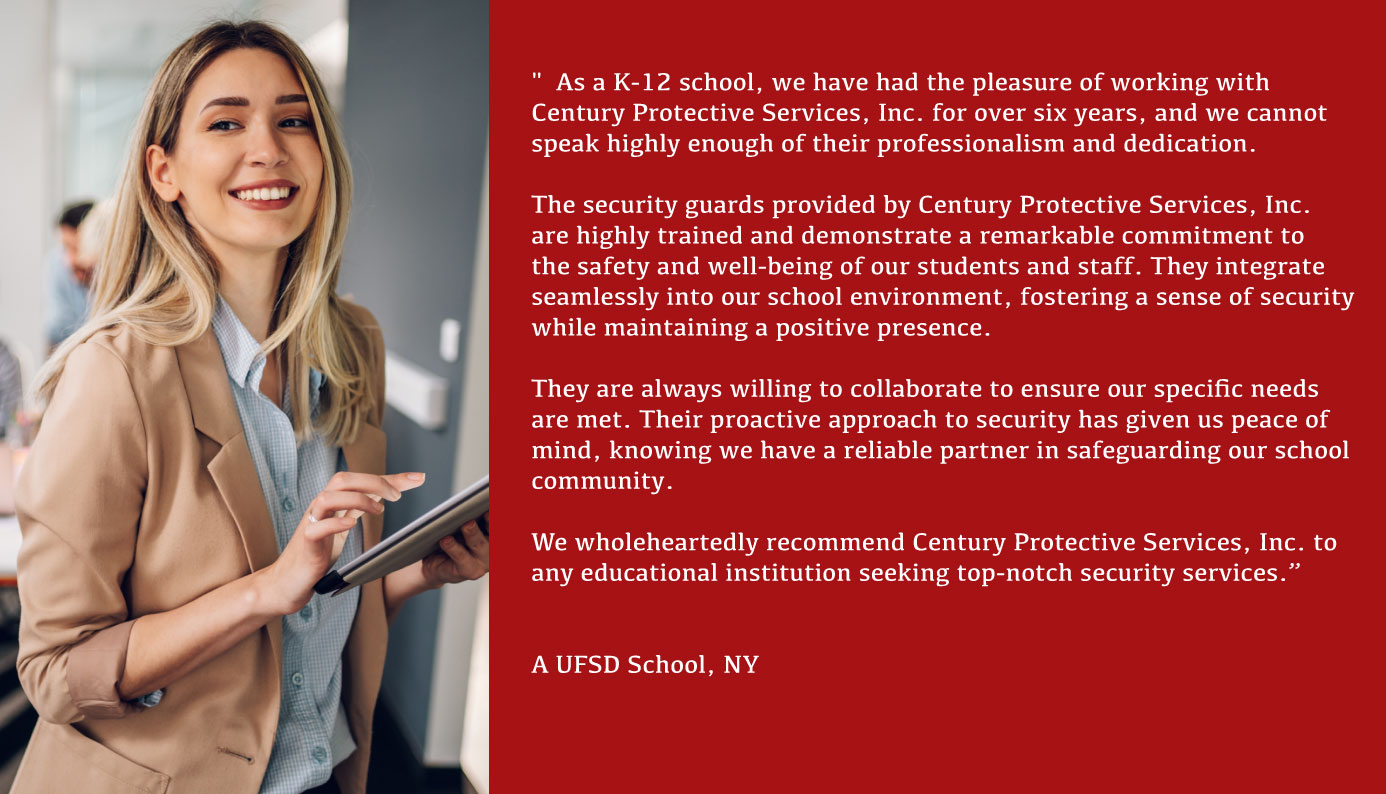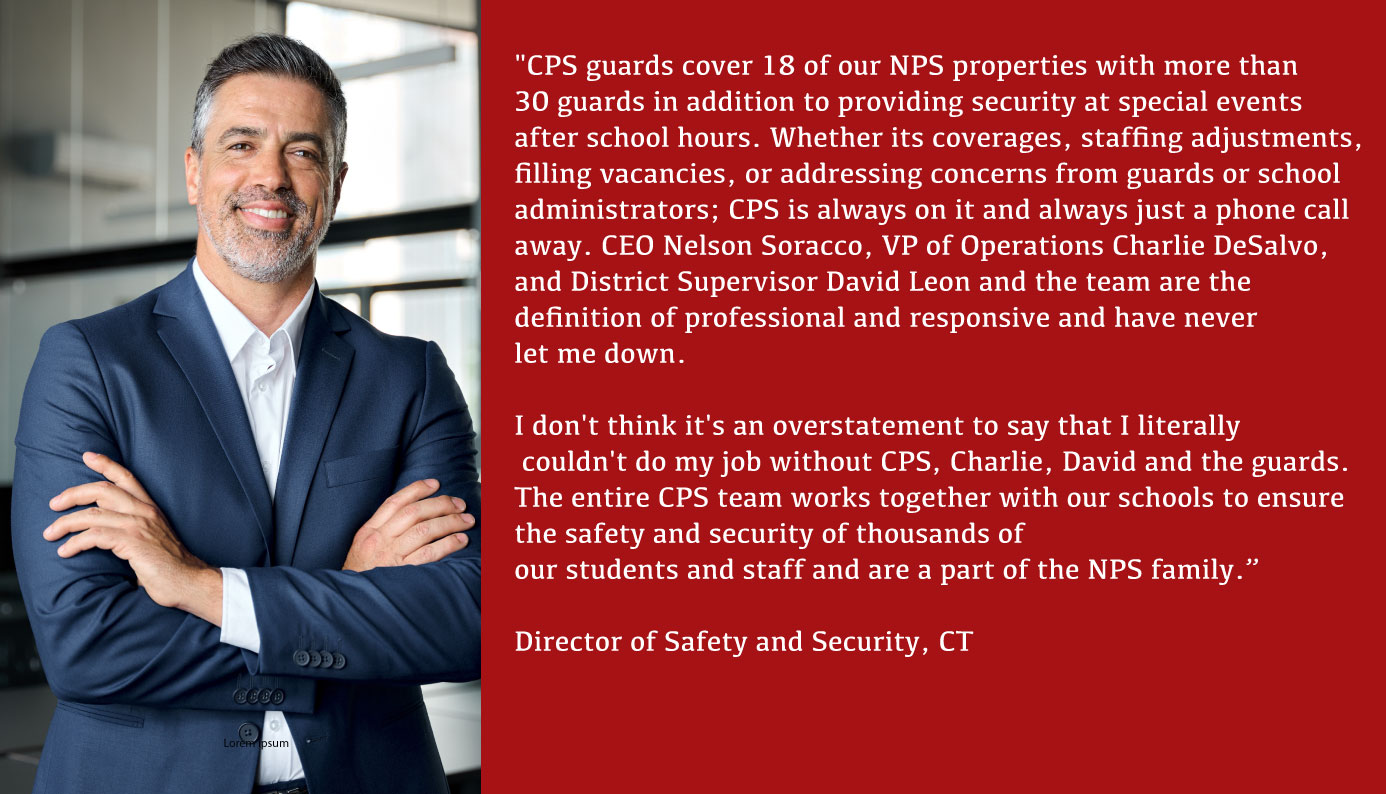

In the nurturing environments of schools and learning facilities, where young minds blossom and futures take shape, maintaining a safe and secure atmosphere is paramount to fostering academic excellence and student well-being. Security guards stand as steadfast protectors, entrusted with the critical task of ensuring the safety and security of students, faculty, and staff within these cherished centers of learning. Let's explore the indispensable functions and strategies employed by security guards to uphold physical security in schools and learning facilities.
The Importance of Physical Security in Schools:
Schools and learning facilities serve as sanctuaries for students, providing not only education but also socialization, emotional support, and personal development. Protecting against security threats such as violence, intruders, and emergencies is essential to creating a conducive learning environment and promoting a sense of safety and belonging among students and staff. Security guards play a central role in implementing security measures, deterring potential threats, and responding swiftly to incidents to ensure the safety and security of everyone within the school community.
Key Functions of Security Guards in Schools:
1. Campus Patrol and Monitoring: Security guards conduct regular patrols of school grounds, hallways, and common areas to monitor for suspicious activity, unauthorized individuals, or safety hazards. Their visible presence helps deter misconduct and provides reassurance to students and staff, promoting a sense of security and well-being.
2. Access Control and Visitor Management: Managing access to school premises and enforcing visitor policies are critical functions of security guards. They verify the identity of visitors, issue visitor badges or passes, and ensure that only authorized individuals gain entry to the school. By controlling access points, security guards prevent unauthorized individuals from entering the campus and enhance overall security.
3. Emergency Response and Crisis Management: Schools must be prepared to respond effectively to emergencies such as lockdowns, medical incidents, or natural disasters. Security guards undergo training in emergency response procedures, evacuation protocols, and crisis management techniques to ensure a prompt and coordinated response to emergencies, protect lives and property, and minimize disruption to learning activities.
4. Conflict Resolution and Student Support: Security guards play a role in maintaining a positive and inclusive school climate by promoting respectful behavior, resolving conflicts, and providing support to students in need. They serve as trusted allies and mentors, offering guidance, intervention, and assistance to students facing personal or academic challenges, fostering a safe and supportive learning environment for all.
5. Security Education and Awareness: Educating students, staff, and parents about security best practices and emergency procedures is essential to enhancing preparedness and resilience within the school community. Security guards conduct security awareness training sessions, drills, and workshops to empower stakeholders to recognize and respond effectively to security threats, promoting a culture of safety and vigilance.

Strategies for Effective Security Management:
1. Collaborative Partnerships: Building strong partnerships with school administrators, teachers, parents, and community stakeholders is essential to effective security management in schools. Security guards collaborate with school leadership to assess security needs, develop comprehensive security plans, and implement proactive measures aligned with the unique requirements of the school community.
2. Technology Integration: Leveraging advanced security technologies such as access control systems, CCTV cameras, and emergency notification systems enhances the capabilities of security guards and strengthens overall security measures. Integration with digital communication platforms enables real-time monitoring, reporting, and response to security incidents, facilitating a coordinated and efficient approach to school security.
3. Student Engagement and Empowerment: Engaging students as partners in school safety initiatives fosters a sense of ownership and responsibility within the school community. Security guards work collaboratively with student councils, safety committees, and peer mentors to develop student-led initiatives, promote positive behavior, and empower students to play an active role in promoting a safe and inclusive school environment.
4. Continuous Improvement and Evaluation: School security protocols and procedures should be regularly evaluated, tested, and refined to adapt to evolving security threats and operational requirements. Security guards conduct regular security assessments, analyze security incidents, and solicit feedback from stakeholders to identify areas for improvement and implement corrective actions, ensuring that security measures remain effective and responsive to changing needs.
In the nurturing and dynamic environments of schools and learning facilities, security guards play a vital role in safeguarding students, staff, and assets, and promoting a culture of safety and well-being. By maintaining a strong physical security presence, implementing proactive measures, and fostering collaboration and engagement within the school community, security guards contribute to the success and resilience of educational institutions, creating safe and supportive environments where students can thrive and achieve their full potential.
